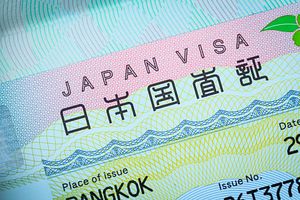To address Japan’s spiraling problem with population decline, a government-appointed panel stated that Japan needs to stabilize its population over the next 50 years at 100 million people. This would be the first time the government has placed a numeric target on population, if the plan is adopted. The Japanese government and most of the public are aware that, at current birth rates, Japan’s population is expected to fall to 87 million by 2060, with nearly 40 percent of the population over the age of 65.
Possible solutions that call for liberalizing immigration policy and gender inequality in the workforce have been raised before, and covered by The Diplomat at length. The difference now is that the government is attempting to adopt a set of plans to hold the population above a specific target. The implications of a rapid decline and aging of the population have also been studied with regard to each municipality up to the year 2040, but the knock-on effects with regard to transportation and utility infrastructure, education, and elder care in regions far from population centers is less widely known.
Already parts of rural Japan are rapidly depopulating as younger people seek opportunity in the country’s vast metropolitan areas. The strain on the government to maintain adequate connections to Japan’s mountainous regions is daunting. Simply maintaining road and rail access could become prohibitively costly as construction costs through mountain regions spiral higher. The panel estimates that more than 25 percent of local governments may be unable to provide administrative services if this population outflow to the cities continues.
The government panel further estimates that if the total fertility rate can recover to 2.07 in 2030 and stay at that level, the population would be 105.45 million in 2060. One of the largest points of concern will be the provision of care for Japan’s ballooning elderly population. To address this issue the panel has recommended raising the age of retirement to 70, and to double government expenditures related to childbirth and childcare benefits. The proposal will be submitted by Akio Mimura, head of the Japan Chamber of Commerce and Industry on Thursday and reflected in the government’s proposal for economic and fiscal reform that will be compiled next month.
The panel strongly maintains that a population of 100 million is the baseline from which Japan will be able to provide basic services at current levels. While little emphasized in this particular report, increased immigration is the only route with a nearly guaranteed ability to sustain Japan’s population. There is reference to the increase of skilled foreign labor, but not at levels that would contribute significantly to the overall population. Japan’s rigid focus on maintaining an overwhelming ethnically homogenous population is a policy that is beginning to show serious negative effects. The country may have to decide in the next decade whether it is better to be crippled by its attachment ethnic identity, or to survive as an economic powerhouse and accept the potential social dislocations that could result from a steady inflow of immigrants.
































